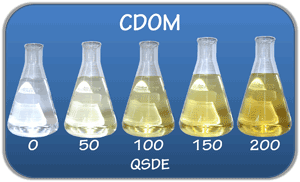What's New
Weather Stations Update
Originally deployed in 2012, thanks to funding from the West Coast Inland Navigation District (WCIND) through a grant from Lee County, the RECON weather stations became the first weather stations in this area located directly over the water. Designed to give researchers and boaters near real-time information on the current over water weather conditions, they quickly became the go to weather source for the local boating community. ...
Read moreThe River, Estuary and Coastal Observing Network (RECON) is a network of water quality sensors deployed throughout the Caloosahatchee river and estuary to provide real-time, water quality data to scientists, policy makers, and the general public.
The extensive watersheds of the Caloosahatchee (1,400 square miles) and Lake Okeechobee (4,400 square miles) each contribute water that flows into the Caloosahatchee estuary and the Gulf of Mexico. Water quality is affected by both Lake Okeechobee discharges and runoff from the Caloosahatchee watershed. Over time, these watersheds have changed from low-nutrient loading marshes and wetlands to high loading urban and agricultural land uses. Nutrients increase turbidity and decrease concentrations of dissolved oxygen (DO). In addition, excess nutrients fuel nuisance algal blooms. Losses of low-nutrient adapted communities, such as seagrasses have contributed to changes in fish, crustacean and marine mammal communities.




 Fluorescent Dissolved Organic Matter (FDOM) is a measure of the dissolved organic matter in freshwater and seawater. Dissolved organic matter is measured using a spectrometer when a water sample is brought back to the laboratory. This is called "colored dissolved organic matter." Colored Dissolved Organic Matter (CDOM) refers to dissolved organic matter in water that absorbs light strongly in the ultraviolet (UV) spectrum. In situ measurements of dissolved organic matter use fluorescence and measure the same pool of organic matter in a slightly different way and is a fast and easy means of tracking dissolved organic matter in natural water.
Fluorescent Dissolved Organic Matter (FDOM) is a measure of the dissolved organic matter in freshwater and seawater. Dissolved organic matter is measured using a spectrometer when a water sample is brought back to the laboratory. This is called "colored dissolved organic matter." Colored Dissolved Organic Matter (CDOM) refers to dissolved organic matter in water that absorbs light strongly in the ultraviolet (UV) spectrum. In situ measurements of dissolved organic matter use fluorescence and measure the same pool of organic matter in a slightly different way and is a fast and easy means of tracking dissolved organic matter in natural water.  CDOM can have a significant effect on biological activity in aquatic systems. CDOM diminishes light as it penetrates water. This has a limiting effect on photosynthesis, thus reducing the amount of light that reaches seagrass beds and reduces shoot densities and the depths at which these underwater plants can grow. CDOM can inhibit the growth of phytoplankton populations, which form the basis of oceanic food chains and are a primary source of atmospheric oxygen.
CDOM can have a significant effect on biological activity in aquatic systems. CDOM diminishes light as it penetrates water. This has a limiting effect on photosynthesis, thus reducing the amount of light that reaches seagrass beds and reduces shoot densities and the depths at which these underwater plants can grow. CDOM can inhibit the growth of phytoplankton populations, which form the basis of oceanic food chains and are a primary source of atmospheric oxygen.